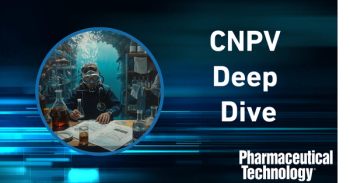
Equipment and Processing Report
- Equipment and Processing Report-01-20-2010
- Volume 0
- Issue 0
Large-Scale Protein Production with a Cell-Free System
The authors sought to improve the productivity of protein synthesis by using a highly active cell-free extract from Escherichia coli and by optimizing buffer conditions and shaking conditions.
In vitro translation systems are based on the principle that protein synthesis does not require an intact cell. This principle led to the development of cell-free protein synthesis by Zubay in 1967. In cell-free production systems, translation is accomplished using a crude cell lysate that provides the necessary translational machinery, accessory enzymes, transfer RNA, and translation factors. The process also requires the addition of a nucleic-acid template, amino acids, and an energy source.
The primary limitation of cell-free, batch-mode reactions is their poor productivity, which results from the transience of the primary energy sources. Phosphoenolpyruvate (PEP), a phosphate energy source, is depleted rapidly, even in the absence of protein synthesis (1). In 1988, Alexander Spirin and colleagues at the Institute of Protein Research in Moscow created a continuous-flow, cell-free translation system to address the problem. This system continuously removes reaction byproducts and relies on a continuous supply of energy and substrates (2). Despite its improvement in yield, however, this system’s operational complexities make it extremely impractical.
By replacing PEP with 3-phosphoglycerate as the primary energy source, productivity can be doubled. The latter energy source enables a steady supply of adenosine triphosphate (ATP), which stimulates protein synthesis (3). ATP production is sustained for a longer time in the presence of 3-phosphoglycerate than it is in the presence of PEP (4). Optimizing the reaction conditions in buffers by adding stabilizers for enzymes and improving the incubation conditions can improve productivity even further (5).
Several laboratories have tried to develop high-throughput, cell-free protein-synthesis systems (6–8). Swartz demonstrated that by using efficient and economical alternatives to PEP (e.g., pyruvate), mimicking Escherichia coli’s cytoplasmic environment, and stabilizing amino acids, it is possible to produce nearly one milligram of protein per milliliter of reaction using a batch format (9, 10).
The current authors sought to improve the productivity of protein synthesis by using a highly active cell-free extract from E. coli and by optimizing buffer conditions and shaking conditions. We also designed a new and simple device for high-throughput reactions. Using common laboratory equipment and materials, our system produces as much as 4 mg of green fluorescent protein (GFP) per milliliter of reaction in high-throughput and large-scale formats. This yield is equivalent to 4 g of GFP protein per liter of reaction (see Figure 1).
A high-throughput reaction requires a 48-well tissue-culture plate and 48 dialysis units. The authors performed cell-free reactions in quantities as large as 5 mL using a covered plastic container, a laboratory dialysis membrane, and clamps. Figure 1 demonstrates the similarity between the productivity of high-throughput (50-µL) and the large-scale (5-mL) operations. The system was about 10 times more efficient than conventional batch reactions with respect to the yield of GFP.
The technology could be useful to manufacture pharmaceutically important proteins on a much larger scale. A large-scale reaction device could be made by applying the techniques for scaling up standard dialysis reactions. Large-scale production of E. coli extract might result in a bottleneck, but it could be overcome by large-scale or continuous fermentation, centrifugation, and cell extraction.
References
- D.M. Kim and J.R. Swartz, Biotechnol. Bioeng.66 (3), 180–188 (1999).
- A.S. Spirin et al., Science242 (4882), 1162–1164 (1988).
- K. Sitaraman et al., J. Biotechnol.110 (3), 257–263 (2004).
- J.W. Kuem et al., J. Biosci. Bioeng.102 (2), 162–165 (2006).
- K. Sitaraman and D.K. Chatterjee, “Energetics in E. coli Based Batch Cell-Free Systems,” in Cell-Free Expression, Kudlicki et al., Eds. (Landes Bioscience, Austin, TX, 1st ed., 2007), pp. 42–52.
- Y. Endo and T. Sawasaki, J. Struct. Funct. Genomics5 (1–2), 45–57 (2004).
- T. Sawasaki et al., FEBS Lett.514 (1), 102–105 (2002).
- T. Kigawa et al., “Bacterial Cell-Free System for Highly Efficient Protein Synthesis,” in Cell-Free Protein Synthesis, A.S. Spirin and J.R. Swartz, Eds. (Wiley-VCH Verlag, Weinheim, Germany, 1st ed., 2008), pp. 83–97.
- M.C. Jewett and J.R. Swartz, Biotechnol. Bioeng.86 (1), 19–26 (2004).
- N. Michel-Reydellet et al., Metab. Eng.6 (3), 197–203 (2004).
Takashi Yabuki is a visiting scientist, and Deb K. Chatterjee is an associate director and senior principal scientist, both at SAIC-Frederick, the National Cancer Institute at Frederick, Frederick, MD 21702,
Articles in this issue
almost 16 years ago
Biopharmaceutical Manufacturers Look for Flexibilityalmost 16 years ago
January 2010 Editor's Picks: Products from Malvern and OYSTARNewsletter
Get the essential updates shaping the future of pharma manufacturing and compliance—subscribe today to Pharmaceutical Technology and never miss a breakthrough.




